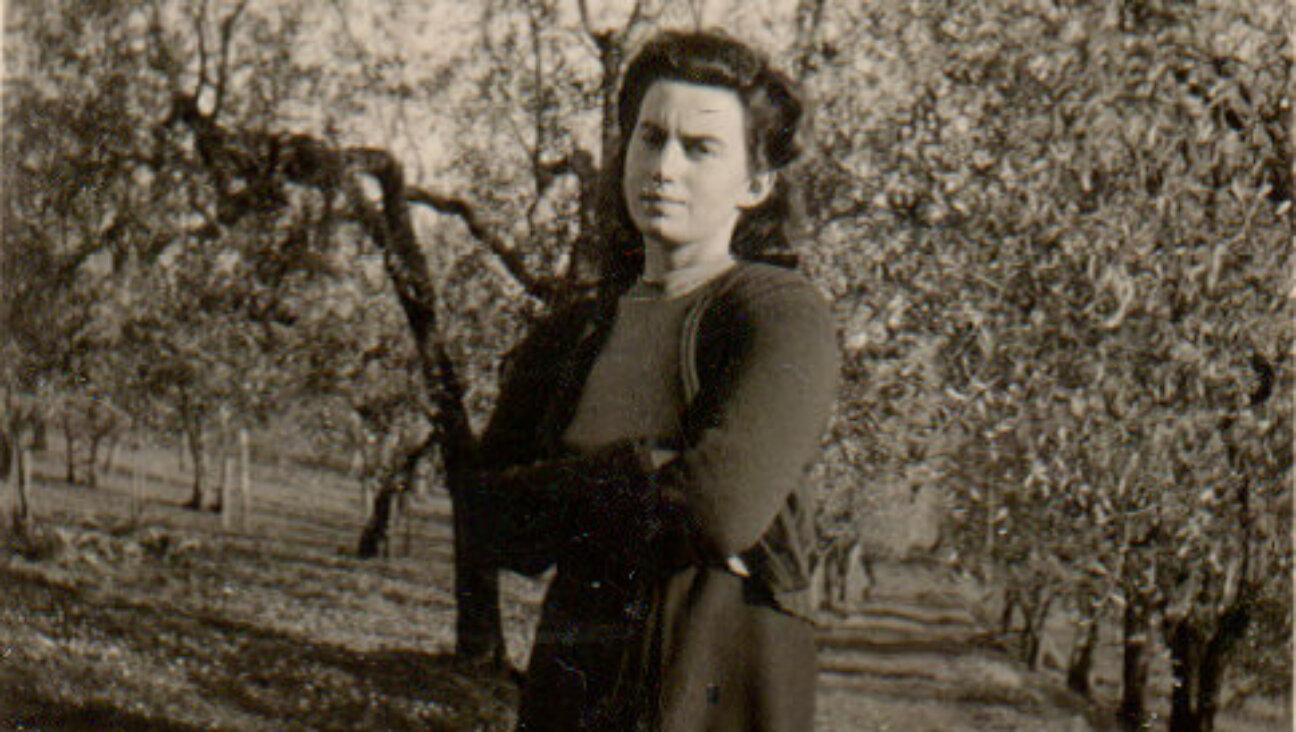Lost for a Century, the Minhogimbukh Returns
There was once an Eastern European tradition to cook chicken livers on Rosh Hashanah because their name in Yiddish, leberlakh, sounds like the injunction “leb ehrlikh,” to “live honestly.”
In fact, there were loads of other customs worldwide — some communities shunned vinegar while celebrating the New Year, because of its sour taste, while still others stayed away from nuts because they calculated (incorrectly!) that the numerical value of the Hebrew word for nut was the same as that of the word for “sin” — that have been all but lost to modern Jewish practice.
This may all change now with the publication of “The Books of Customs: A Complete Handbook for the Jewish Year” (HarperCollins), by a book designer with a tale almost as fascinating as those told in his new release.
Fifteen years ago, while researching a project, Scott-Martin Kosofsky happened upon a series of unique Renaissance woodcuts depicting Jewish customs practiced in the European diaspora. The source turned out to be an edition of something called a Minhogimbukh, or “customs book,” a guide to the Jewish year — part farmer’s almanac, part prayer book — written in Yiddish, the language of the people.
More amazingly, as Kosofsky learned later, he had discovered a widely used, uniquely important artifact of European Jewish life from 1590 to 1890. Minhogimbukhs — which detailed the rituals, liturgies and texts of the entire Jewish year, from the Sabbath and festivals to the major life-cycle events such as weddings, births, bar and bat mitzvahs and deaths — were published in dozens of editions and revised throughout the centuries in Venice, Prague, Amsterdam and Germany, as well as in Poland and Russia as of the 19th century. By the late 19th century, use of the Minhogimbukh waned as Jewish practice became polarized between the secularist and traditionalist views.
Stacking various editions of Minhogimbukhs next to each other presents a virtual history lesson in the evolution of Jewish custom throughout three centuries. Inspired by this, Kosofsky set out to create the first new edition of a Minhogimbukh in more than a century, illustrated by the original woodcuts that started him on the journey.
“This book is a digest of all the texts,” Kosofsky said in an interview with the Forward. “The prayer book isn’t a document one can read front to back. There’s a tremendous amount of repetition, and in the era of short attention spans and narratives, this is very useful. It’s difficult to find information on the Jewish year without jumping from book to book. Before this book, you needed several books to find answers.”
One adaptation is that, in the Minhogimbukhs, Jewish custom is often explained through folkloric-style teachings, but Kosofsky wanted contemporary and more practical clarity.
“I wanted the words that came out of people’s mouths and not heavy folklore,” he said. “Midrash [exegesis] can be a distraction. People don’t know the difference between law and custom, Midrash and Torah. It’s all melded into one by rabbis. We need facts.”
In that spirit, here are some facts about High Holy Day customs:
• Many people know that on the first day of Rosh Hashanah, it is customary to throw breadcrumbs into a nearby body of water in a symbolic gesture of casting off one’s sins. But an unusual Kurdish variant required adherents to throw their whole bodies into the water.
• It is forbidden to throw away the old water and put fresh water in the vase in which one leaves the four species, or lulav, on Sukkot. One is allowed to add fresh water to the old, though.
• On Hoshanah Rabbah, the seventh day of Sukkot, some have the custom to cover themselves in a sheet and go to a place where the moon can be seen and then throw off the sheet, standing naked in the spot. “They stand straight, with all their limbs spread out, and they examine their shadow in the moon,” Kosofsky writes. If one’s head is missing, he will lose his head. If his fingers are missing, that refers to his relatives. If his right hand is missing, that means his son. If his left hand is missing, that means his daughter.”
Kosofsky believes that by revealing the rituals performed by actual people throughout history, this book might be able to put today’s Jews in touch with their heritage.
“There are people who aspire to do more these days, to have some ideas of Judaism as it is lived on the ground,” he said. “I wish I’d had this book when I was younger.”
Kosofsky’s next project for 2006 is a collaboration titled “Great Occasions in American Jewish History — The American Jewish Experience As Seen Through Eighty Key Events, Documents, People and Ideas.”
“[The Book of Customs] changed my daily consciousness in a very complete way. I can live the Jewish year with this resource and have stuff to think about when doing it,” he said. “It helped me to understand who I am.”
Shira Levine is a freelance writer based in New York.
The Forward is free to read, but it isn’t free to produce

I hope you appreciated this article. Before you go, I’d like to ask you to please support the Forward.
Now more than ever, American Jews need independent news they can trust, with reporting driven by truth, not ideology. We serve you, not any ideological agenda.
At a time when other newsrooms are closing or cutting back, the Forward has removed its paywall and invested additional resources to report on the ground from Israel and around the U.S. on the impact of the war, rising antisemitism and polarized discourse.
This is a great time to support independent Jewish journalism you rely on. Make a gift today!
— Rachel Fishman Feddersen, Publisher and CEO
Support our mission to tell the Jewish story fully and fairly.
Most Popular
- 1

Fast Forward Ye debuts ‘Heil Hitler’ music video that includes a sample of a Hitler speech
- 2

Opinion It looks like Israel totally underestimated Trump
- 3

Culture Cardinals are Catholic, not Jewish — so why do they all wear yarmulkes?
- 4

Fast Forward Student suspended for ‘F— the Jews’ video defends himself on antisemitic podcast
In Case You Missed It
-

Culture How one Jewish woman fought the Nazis — and helped found a new Italian republic
-

Opinion It looks like Israel totally underestimated Trump
-

Fast Forward Betar ‘almost exclusively triggered’ former student’s detention, judge says
-

Fast Forward ‘Honey, he’s had enough of you’: Trump’s Middle East moves increasingly appear to sideline Israel
-
Shop the Forward Store
100% of profits support our journalism
Republish This Story
Please read before republishing
We’re happy to make this story available to republish for free, unless it originated with JTA, Haaretz or another publication (as indicated on the article) and as long as you follow our guidelines.
You must comply with the following:
- Credit the Forward
- Retain our pixel
- Preserve our canonical link in Google search
- Add a noindex tag in Google search
See our full guidelines for more information, and this guide for detail about canonical URLs.
To republish, copy the HTML by clicking on the yellow button to the right; it includes our tracking pixel, all paragraph styles and hyperlinks, the author byline and credit to the Forward. It does not include images; to avoid copyright violations, you must add them manually, following our guidelines. Please email us at [email protected], subject line “republish,” with any questions or to let us know what stories you’re picking up.














